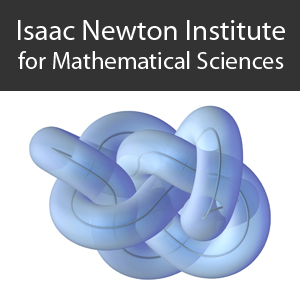DNA topology and the mechanism of type II DNA topoisomerases
45 mins 20 secs,
41.51 MB,
MP3
44100 Hz,
125.02 kbits/sec
Share this media item:
Embed this media item:
Embed this media item:
About this item

| Description: |
Maxwell, A (John Innes Centre, Norwich)
Thursday 06 September 2012, 09:10-09:50 |
|---|
| Created: | 2012-09-10 13:17 |
|---|---|
| Collection: | Topological Dynamics in the Physical and Biological Sciences |
| Publisher: | Isaac Newton Institute |
| Copyright: | Maxwell, A |
| Language: | eng (English) |
| Abstract: | The topology of DNA plays vital roles in its biological function, particularly in the control of gene expression; DNA topoisomerases are enzymes that control DNA topology in all cells. They are divided into two types, I and II, depending on whether their reactions proceed via single- or double-strand breaks in DNA. The type II enzymes (such as bacterial DNA gyrase and DNA topoisomerase IV) cleave DNA in both strands and transport another double-stranded segment of DNA through this break. This process can lead to DNA relaxation, decatenation and unknotting, and, in the case of gyrase, DNA supercoiling, in reactions coupled to the hydrolysis of ATP. Although it is clear to see why supercoiling by gyrase (an endergonic reaction) requires ATP, this is less obvious with other type II enzymes that can only carry out relaxation. One potential role for ATP in the non-supercoiling topoisomerases is in the simplification of DNA topology: generating steady-state distributions of topoiso mers that are simpler than those seen at thermodynamic equilibrium. However, the energetic requirements for topology simplification are very small compared with the free energy available from ATP hydrolysis. Instead we propose that this energy is used to disrupt protein-protein interfaces in the enzyme, which are very stable in order to prevent unwanted DNA cleavage and accidental double-strand breaks in the chromosome. We suggest that this proposed role for ATP in disrupting protein interfaces may apply to other biological systems.
In related experiments, we are aiming to understand the ways in which DNA topology controls gene expression by investigating how DNA recognition is influenced by DNA supercoiling, using a combined approach involving molecular dynamics and biochemical/biophysical methods. In this approach we are using small DNA circles of varying superhelicity and examining DNA triplex formation as model system to study the thermodynamics of supercoiling-dependent DNA recognition. |
|---|---|
Available Formats
| Format | Quality | Bitrate | Size | |||
|---|---|---|---|---|---|---|
| MPEG-4 Video | 640x360 | 1.85 Mbits/sec | 630.86 MB | View | Download | |
| WebM | 640x360 | 1.07 Mbits/sec | 365.11 MB | View | Download | |
| Flash Video | 484x272 | 568.76 kbits/sec | 189.40 MB | View | Download | |
| iPod Video | 480x270 | 506.25 kbits/sec | 168.65 MB | View | Download | |
| MP3 * | 44100 Hz | 125.02 kbits/sec | 41.51 MB | Listen | Download | |
| Auto | (Allows browser to choose a format it supports) | |||||

